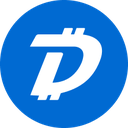-
 Bitcoin
Bitcoin $83,055.9927
-0.47% -
 Ethereum
Ethereum $1,811.3411
-0.84% -
 Tether USDt
Tether USDt $0.9996
-0.02% -
 XRP
XRP $2.0568
-0.29% -
 BNB
BNB $592.3786
-1.07% -
 USDC
USDC $1.0000
0.02% -
 Solana
Solana $115.8401
-3.10% -
 Dogecoin
Dogecoin $0.1622
-2.36% -
 Cardano
Cardano $0.6499
-0.49% -
 TRON
TRON $0.2387
1.14% -
 Toncoin
Toncoin $3.5313
-7.91% -
 UNUS SED LEO
UNUS SED LEO $9.4387
0.79% -
 Chainlink
Chainlink $12.8160
-2.83% -
 Stellar
Stellar $0.2597
-0.92% -
 Avalanche
Avalanche $18.1550
-1.86% -
 Sui
Sui $2.2297
-6.00% -
 Shiba Inu
Shiba Inu $0.0...01216
-1.10% -
 Hedera
Hedera $0.1628
-0.73% -
 Litecoin
Litecoin $83.3180
0.23% -
 Polkadot
Polkadot $4.0186
-0.86% -
 MANTRA
MANTRA $6.3865
0.69% -
 Bitcoin Cash
Bitcoin Cash $302.0680
0.90% -
 Bitget Token
Bitget Token $4.5033
-1.06% -
 Dai
Dai $1.0000
0.01% -
 Ethena USDe
Ethena USDe $0.9995
-0.05% -
 Hyperliquid
Hyperliquid $11.9355
-4.35% -
 Monero
Monero $213.8810
-0.87% -
 Pi
Pi $0.5489
-17.54% -
 Uniswap
Uniswap $5.8524
-1.97% -
 Aptos
Aptos $5.0205
-3.57%
Is USDT's reserve transparent?
USDT's reserve transparency is crucial for user trust, with Tether using attestations and facing criticisms; efforts continue to improve clarity and stability.
Apr 03, 2025 at 01:50 pm

USDT, also known as Tether, is a widely used stablecoin in the cryptocurrency market, designed to maintain a 1:1 peg with the US dollar. One of the most frequently asked questions about USDT is the transparency of its reserves. This article aims to delve into the details of USDT's reserve transparency, exploring the measures Tether Limited has taken to assure users of its backing, the criticisms it has faced, and the ongoing efforts to improve transparency.
Tether's Claims on Reserve Transparency
Tether Limited has consistently claimed that each USDT token is backed by an equivalent amount of traditional currency held in reserve. The company asserts that these reserves are primarily composed of cash, cash equivalents, and other assets, such as loans to third parties or securities. To support these claims, Tether has periodically released attestations from independent accounting firms.
The Role of Attestations
Attestations are reports provided by third-party accounting firms that review Tether's reserves. These reports aim to confirm that the reserves match the circulating supply of USDT. However, it's important to note that these attestations are not full audits. An attestation is less comprehensive than an audit, as it does not involve a detailed examination of Tether's financial statements or internal controls.
Criticisms and Concerns
Despite Tether's efforts to provide transparency through attestations, the cryptocurrency community has raised several concerns. Critics argue that the lack of a full audit leaves room for doubt about the actual composition and liquidity of the reserves. There have been instances where the attestations revealed that a significant portion of the reserves was held in non-cash assets, such as commercial paper, which raised questions about the immediate convertibility of USDT to USD.
The Evolution of Tether's Transparency Measures
Over the years, Tether has taken steps to address these criticisms and enhance the transparency of its reserves. In 2021, Tether announced a partnership with BDO Italia, a member of the BDO global network of accounting firms, to conduct quarterly attestations. This move was seen as a step towards more regular and detailed reporting on the composition of its reserves.
Detailed Breakdown of Tether's Reserves
Tether's attestations typically provide a breakdown of the assets held in reserve. These reports categorize the reserves into different asset classes, such as:
- Cash and bank deposits
- Money market funds
- Treasury bills
- Commercial paper
- Secured loans
- Other investments
This breakdown aims to give users a clearer picture of the types of assets backing USDT. However, the exact details and proportions of these assets can vary from one attestation to another.
The Importance of Liquidity
One of the key concerns surrounding USDT's reserves is the liquidity of the assets held. Liquidity refers to how quickly and easily an asset can be converted into cash without affecting its market price. High liquidity is crucial for a stablecoin like USDT, as it ensures that users can redeem their tokens for USD at any time.
Tether's Response to Liquidity Concerns
To address liquidity concerns, Tether has emphasized the inclusion of highly liquid assets in its reserves, such as cash and cash equivalents. The company has also stated that it maintains a diversified portfolio to mitigate risks associated with any single asset class. However, the exact liquidity profile of the reserves remains a point of contention among observers.
The Impact of Regulatory Scrutiny
Regulatory scrutiny has played a significant role in pushing Tether towards greater transparency. Various regulatory bodies, including the New York Attorney General and the Commodity Futures Trading Commission (CFTC), have investigated Tether's operations and reserve practices. These investigations have led to settlements and fines, which have prompted Tether to improve its reporting and compliance measures.
Tether's Efforts to Build Trust
In addition to regular attestations, Tether has taken other steps to build trust with its user base. The company has launched initiatives to provide more detailed information about its operations and reserve management. For instance, Tether has published blog posts and whitepapers that outline its reserve management policies and strategies.
The Role of Community and Media
The cryptocurrency community and media have played a crucial role in holding Tether accountable for its reserve transparency. Through investigative journalism and community-driven research, various groups have scrutinized Tether's claims and pushed for greater transparency. This pressure has contributed to Tether's ongoing efforts to improve its reporting and disclosure practices.
The Future of USDT's Reserve Transparency
As the cryptocurrency market continues to evolve, the demand for transparency in stablecoin operations is likely to increase. Tether may face further pressure to provide more comprehensive audits and detailed reporting on its reserves. The company's ability to adapt to these demands will be crucial in maintaining user trust and ensuring the stability of USDT.
Challenges and Opportunities
Tether faces several challenges in achieving full transparency, including the complexity of managing a diverse portfolio of assets and the need to balance transparency with operational security. However, these challenges also present opportunities for Tether to set new standards in the stablecoin industry and lead by example in terms of reserve management and disclosure.
The Role of Technology in Enhancing Transparency
Advancements in blockchain and financial technology could play a significant role in enhancing the transparency of USDT's reserves. For instance, the use of smart contracts and decentralized ledgers could provide real-time visibility into the composition and movement of reserve assets. Tether could explore these technologies to provide users with more immediate and verifiable information about its reserves.
The Broader Implications for the Stablecoin Market
The transparency of USDT's reserves has broader implications for the stablecoin market as a whole. As one of the largest and most widely used stablecoins, USDT's practices set a precedent for other stablecoin issuers. Greater transparency from Tether could encourage other stablecoins to adopt similar standards, ultimately benefiting the entire cryptocurrency ecosystem by enhancing trust and stability.
User Confidence and Market Stability
User confidence in USDT is closely tied to the perceived transparency and stability of its reserves. Any doubts about the backing of USDT can lead to market volatility and undermine the stability of the stablecoin. Therefore, Tether's efforts to improve reserve transparency are crucial not only for its own reputation but also for the overall health of the cryptocurrency market.
The Role of Independent Audits
Independent audits are considered the gold standard for financial transparency. While Tether has relied on attestations, moving towards full audits conducted by reputable firms could significantly enhance the credibility of its reserve claims. Such audits would provide a more thorough examination of Tether's financial statements and internal controls, offering users a higher level of assurance about the stability of USDT.
The Importance of Regular Reporting
Regular reporting is another key aspect of reserve transparency. By providing frequent updates on the composition and liquidity of its reserves, Tether can help maintain user trust and market stability. Regular reporting also allows users to track changes in the reserve portfolio over time, providing a more dynamic view of USDT's backing.
The Role of Public Communication
Effective public communication is essential for maintaining transparency. Tether's use of blog posts, social media, and other channels to communicate with its user base can help address concerns and provide clarity on reserve management practices. Clear and consistent communication can go a long way in building and maintaining trust among USDT users.
The Impact of Market Dynamics
Market dynamics can also influence the transparency of USDT's reserves. During periods of high volatility or market stress, the demand for transparency may increase as users seek assurance about the stability of their holdings. Tether's ability to respond to these dynamics with timely and accurate information will be critical in maintaining user confidence.
The Role of Regulatory Compliance
Regulatory compliance is another important factor in reserve transparency. As regulatory frameworks for stablecoins evolve, Tether may need to adapt its practices to meet new standards and requirements. Compliance with these regulations can enhance the credibility of USDT's reserve claims and provide users with greater assurance about the stability of the stablecoin.
The Importance of Diversification
Diversification of reserve assets is a key strategy for managing risk and ensuring liquidity. Tether's approach to diversification, including the types of assets held and the strategies used to manage them, can impact the overall transparency and stability of its reserves. A well-diversified portfolio can help mitigate risks and provide a more robust backing for USDT.
The Role of Third-Party Verification
Third-party verification, beyond attestations, can play a crucial role in enhancing the transparency of USDT's reserves. This could include partnerships with reputable financial institutions or the use of blockchain-based verification systems. Such measures can provide an additional layer of assurance for users and help build trust in the stability of USDT.
The Impact of Global Economic Conditions
Global economic conditions can also influence the transparency and stability of USDT's reserves. Factors such as interest rates, inflation, and economic policies can affect the value and liquidity of the assets held in reserve. Tether's ability to navigate these conditions and maintain a stable and transparent reserve portfolio will be crucial for the ongoing success of USDT.
The Role of User Feedback
User feedback is an important component of reserve transparency. Tether's engagement with its user base, including addressing concerns and incorporating feedback into its practices, can help improve the transparency and stability of its reserves. By listening to users and responding to their needs, Tether can enhance its reputation and maintain trust in USDT.
The Importance of Continuous Improvement
Continuous improvement is essential for maintaining reserve transparency. Tether's willingness to adapt and enhance its practices in response to feedback, regulatory changes, and market dynamics will be critical in ensuring the ongoing stability and credibility of USDT. By committing to continuous improvement, Tether can build a more transparent and trustworthy stablecoin.
The Role of Education and Awareness
Education and awareness are also important for enhancing reserve transparency. By providing users with clear and accessible information about its reserve management practices, Tether can help build understanding and trust. Educational initiatives can empower users to make informed decisions about their use of USDT and contribute to a more transparent and stable cryptocurrency ecosystem.
Common Questions About USDT's Reserve Transparency
Q: What is an attestation, and how does it differ from an audit?
A: An attestation is a report provided by a third-party accounting firm that reviews Tether's reserves to confirm they match the circulating supply of USDT. Unlike a full audit, an attestation is less comprehensive and does not involve a detailed examination of Tether's financial statements or internal controls.
Q: What types of assets are included in Tether's reserves?
A: Tether's reserves typically include a mix of assets such as cash, bank deposits, money market funds, treasury bills, commercial paper, secured loans, and other investments. The exact composition can vary based on the latest attestation reports.
Q: How often does Tether release attestation reports?
A: Tether has committed to releasing quarterly attestation reports, which provide updates on the composition and liquidity of its reserves. These reports are intended to enhance transparency and build user trust.
Q: What are the main criticisms of Tether's reserve transparency?
A: The main criticisms include the lack of a full audit, concerns about the liquidity of reserve assets, and questions about the exact composition of the reserves. Critics argue that attestations alone are insufficient to fully verify the stability of USDT.
Q: How has Tether responded to these criticisms?
A: Tether has responded by increasing the frequency of its attestation reports, partnering with reputable accounting firms like BDO Italia, and providing more detailed information about its reserve management practices. The company has also emphasized the inclusion of highly liquid assets in its reserves.
Q: What role do regulatory bodies play in Tether's reserve transparency?
A: Regulatory bodies, such as the New York Attorney General and the CFTC, have investigated Tether's operations and reserve practices. These investigations have led to settlements and fines, prompting Tether to improve its reporting and compliance measures.
Q: How can technology enhance the transparency of USDT's reserves?
A: Technologies such as smart contracts and decentralized ledgers could provide real-time visibility into the composition and movement of reserve assets. Tether could explore these technologies to offer users more immediate and verifiable information about its reserves.
Q: What are the broader implications of USDT's reserve transparency for the stablecoin market?
A: As one of the largest stablecoins, USDT's practices set a precedent for the industry. Greater transparency from Tether could encourage other stablecoins to adopt similar standards, ultimately benefiting the entire cryptocurrency ecosystem by enhancing trust and stability.
Q: How does user confidence in USDT relate to reserve transparency?
A: User confidence in USDT is closely tied to the perceived transparency and stability of its reserves. Any doubts about the backing of USDT can lead to market volatility and undermine the stability of the stablecoin. Therefore, Tether's efforts to improve reserve transparency are crucial for maintaining user trust.
Q: What steps can Tether take to further enhance reserve transparency?
A: Tether can enhance reserve transparency by moving towards full audits, increasing the frequency and detail of its reporting, leveraging technology for real-time visibility, and engaging with its user base to address concerns and incorporate feedback.
Disclaimer:info@kdj.com
The information provided is not trading advice. kdj.com does not assume any responsibility for any investments made based on the information provided in this article. Cryptocurrencies are highly volatile and it is highly recommended that you invest with caution after thorough research!
If you believe that the content used on this website infringes your copyright, please contact us immediately (info@kdj.com) and we will delete it promptly.
- Cango, a publicly traded Chinese conglomerate, has agreed to sell its legacy China operations to an entity associated with peer Bitmain
- 2025-04-04 09:35:11
- Neo Initiates an Investigation into Large-scale NEO Token Movements Preceding a Sharp Decline in Market Value
- 2025-04-04 09:35:11
- Bitcoin (BTC) Price Juggles Around $82,000 as the Global Market Dynamics Are Surrounded with Uncertainty
- 2025-04-04 09:30:12
- Move Over DOGE and PEPE, There's a New Meme Coin in the Market: InfluencerPepe
- 2025-04-04 09:30:12
- Solana (SOL) Drops by Nearly 12.75% in the Last 24 Hours to a Three-Week Low of $100
- 2025-04-04 09:25:12
- Florida Homeowners Will Have to Wait for Property Tax Relief
- 2025-04-04 09:25:12
Related knowledge
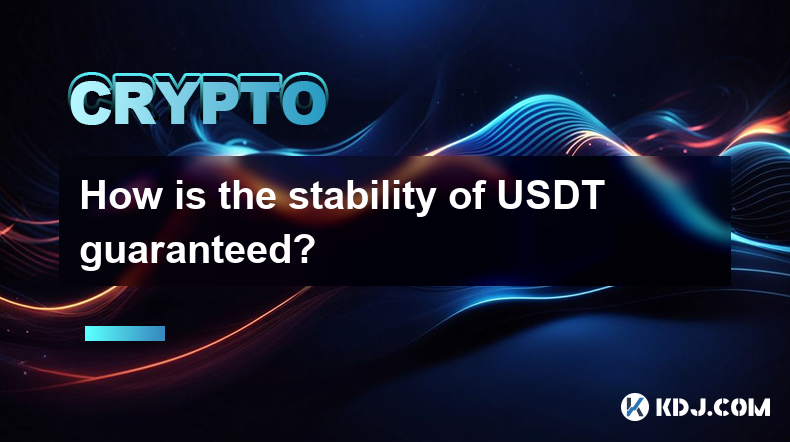
How is the stability of USDT guaranteed?
Apr 03,2025 at 06:00am
The stability of USDT, also known as Tether, is a critical aspect that underpins its role as a stablecoin in the cryptocurrency market. USDT is designed to maintain a 1:1 peg with the US dollar, which is achieved through a combination of mechanisms and practices. Understanding these elements is essential for anyone interested in the stability and reliab...
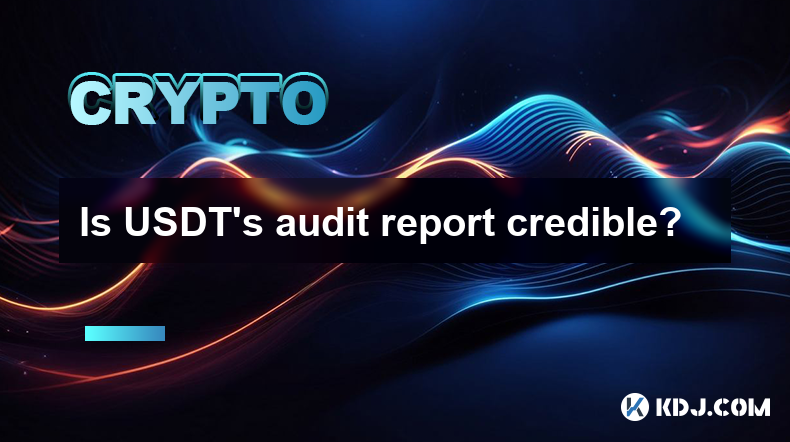
Is USDT's audit report credible?
Apr 02,2025 at 03:00pm
The credibility of USDT's audit report is a topic of significant interest and debate within the cryptocurrency community. USDT, or Tether, is a stablecoin that claims to be backed 1:1 by traditional fiat currencies, primarily the US dollar. The company behind USDT, Tether Limited, periodically releases audit reports to assure users of its solvency and t...

Is USDT's reserve transparent?
Apr 03,2025 at 01:50pm
USDT, also known as Tether, is a widely used stablecoin in the cryptocurrency market, designed to maintain a 1:1 peg with the US dollar. One of the most frequently asked questions about USDT is the transparency of its reserves. This article aims to delve into the details of USDT's reserve transparency, exploring the measures Tether Limited has taken to ...
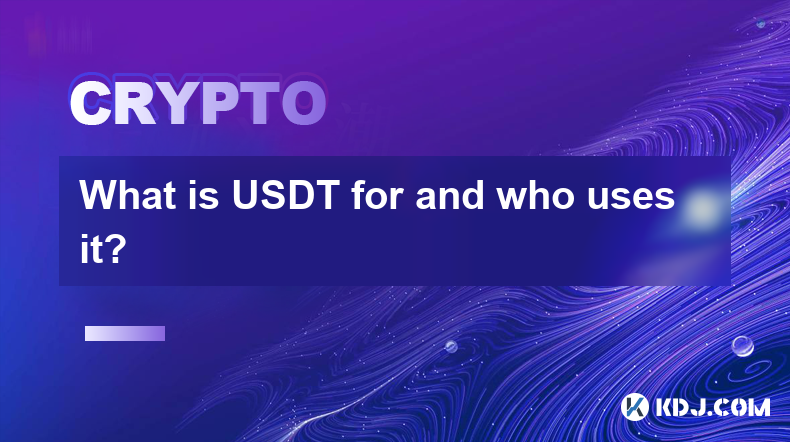
What is USDT for and who uses it?
Mar 31,2025 at 01:54pm
What does USDT do? Who can use it? USDT: The purpose of stablecoins and user groupsUSDT, full name Tether, is a stablecoin pegged to the US dollar. This means that 1 USDT should theoretically always be worth $1. Its main function is to provide a relatively stable store of value and trading medium in the cryptocurrency market, reducing the risks brought...
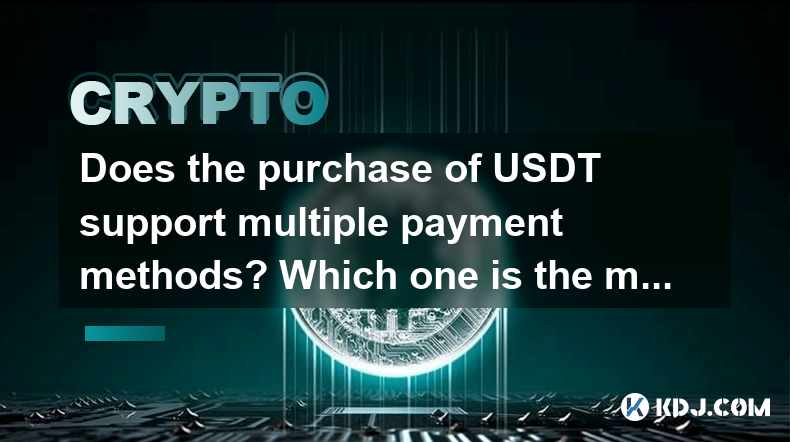
Does the purchase of USDT support multiple payment methods? Which one is the most cost-effective?
Mar 28,2025 at 04:56pm
Exploring USDT Purchase Options and CostsThe purchase of Tether (USDT), a popular stablecoin pegged to the US dollar, offers various payment methods, each with its own associated costs and benefits. The availability of specific methods depends heavily on the exchange or platform you choose. There's no single 'best' method, as cost-effectiveness is rela...
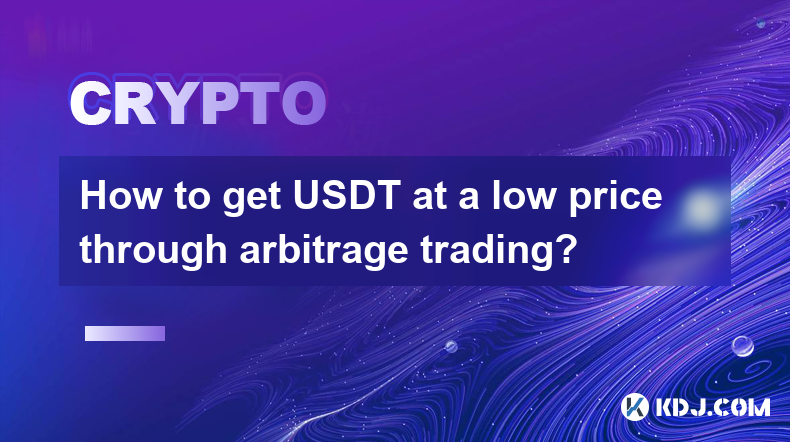
How to get USDT at a low price through arbitrage trading?
Mar 27,2025 at 08:14pm
Understanding Arbitrage Trading for USDTArbitrage trading exploits price discrepancies of the same asset across different exchanges. In the context of USDT (Tether), this means buying USDT on one exchange where it's cheaper and selling it on another where it's more expensive, profiting from the difference. This requires speed, efficiency, and access to...

How is the stability of USDT guaranteed?
Apr 03,2025 at 06:00am
The stability of USDT, also known as Tether, is a critical aspect that underpins its role as a stablecoin in the cryptocurrency market. USDT is designed to maintain a 1:1 peg with the US dollar, which is achieved through a combination of mechanisms and practices. Understanding these elements is essential for anyone interested in the stability and reliab...

Is USDT's audit report credible?
Apr 02,2025 at 03:00pm
The credibility of USDT's audit report is a topic of significant interest and debate within the cryptocurrency community. USDT, or Tether, is a stablecoin that claims to be backed 1:1 by traditional fiat currencies, primarily the US dollar. The company behind USDT, Tether Limited, periodically releases audit reports to assure users of its solvency and t...

Is USDT's reserve transparent?
Apr 03,2025 at 01:50pm
USDT, also known as Tether, is a widely used stablecoin in the cryptocurrency market, designed to maintain a 1:1 peg with the US dollar. One of the most frequently asked questions about USDT is the transparency of its reserves. This article aims to delve into the details of USDT's reserve transparency, exploring the measures Tether Limited has taken to ...

What is USDT for and who uses it?
Mar 31,2025 at 01:54pm
What does USDT do? Who can use it? USDT: The purpose of stablecoins and user groupsUSDT, full name Tether, is a stablecoin pegged to the US dollar. This means that 1 USDT should theoretically always be worth $1. Its main function is to provide a relatively stable store of value and trading medium in the cryptocurrency market, reducing the risks brought...

Does the purchase of USDT support multiple payment methods? Which one is the most cost-effective?
Mar 28,2025 at 04:56pm
Exploring USDT Purchase Options and CostsThe purchase of Tether (USDT), a popular stablecoin pegged to the US dollar, offers various payment methods, each with its own associated costs and benefits. The availability of specific methods depends heavily on the exchange or platform you choose. There's no single 'best' method, as cost-effectiveness is rela...

How to get USDT at a low price through arbitrage trading?
Mar 27,2025 at 08:14pm
Understanding Arbitrage Trading for USDTArbitrage trading exploits price discrepancies of the same asset across different exchanges. In the context of USDT (Tether), this means buying USDT on one exchange where it's cheaper and selling it on another where it's more expensive, profiting from the difference. This requires speed, efficiency, and access to...
See all articles


















































































